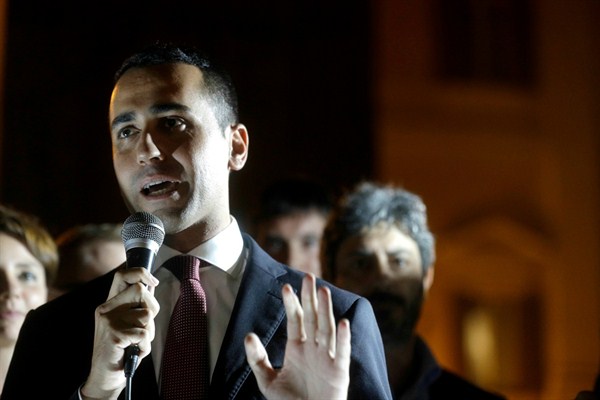BOLOGNA—Italy’s Five Star Movement has a new leader. At the national meeting for the upstart populist party late last month—calling it a congress would be far too formal for the anti-establishment movement—its co-founder, comedian Beppe Grillo, stepped down as the political leader, although he will remain its “garante,” or judge of final appeal for internal disputes. An online primary in which a mere 37,000 people voted anointed Luigi Di Maio as the new political head of the M5S, as the party is known in Italy. The election was clearly the result of a backroom fix of the kind the M5S decries with other parties. None of the M5S’ other recognized leaders, such as firebrand orator Alessandro Di Battista, competed, while Grillo overtly gave Di Maio his backing. The election was an investiture rather than a contest.
Who is Luigi Di Maio? Born in Avellino near Naples, he is the 31-year-old deputy speaker of the Chamber of Deputies, elected to parliament in the 2013 tsunami in which the M5S took a stunning 25 percent of the popular vote. He is telegenic, good on the political talk shows that are the plague of primetime Italian TV, and heads the “governmentalist” wing of the M5S—that is, the part of the movement that believes it should get into power and enact its program, rather than those who believe that its main task is to act as a force for moral opposition. From the moment of his election to parliament, Di Maio has dressed like a diplomat, shown skill at public relations and never missed a photo opportunity. Grillo has made a career out of moral outrage; Di Maio, by contrast, says many of the same things as the movement’s charismatic founder, but with a flashing smile.
But what is behind that smile? Di Maio, like the M5S itself, remains something of an enigma. He is being talked about as a potential prime minister, but what do he and the M5S exactly want? The most complete analysis of the M5S, which was published earlier this year in Italian under the title “M5S: Come cambia il partito di Grillo”—or “How Grillo’s Party Is Changing”—describes a populist force that has become right-wing on many issues, notably African migration. Di Maio, to the disgust of some of the movement’s early, more leftist members, has taken a line all but indistinguishable from the right-wing populist Northern League on the immigration question, although the movement’s official position is less hard-line. The movement rallies disenchanted Italians against the institutions of the Italian state, the major political parties, the elites of Europe and the “corrupt, dishonest” Italian media, which the party’s leaders are perennially accusing of publishing fake news.

